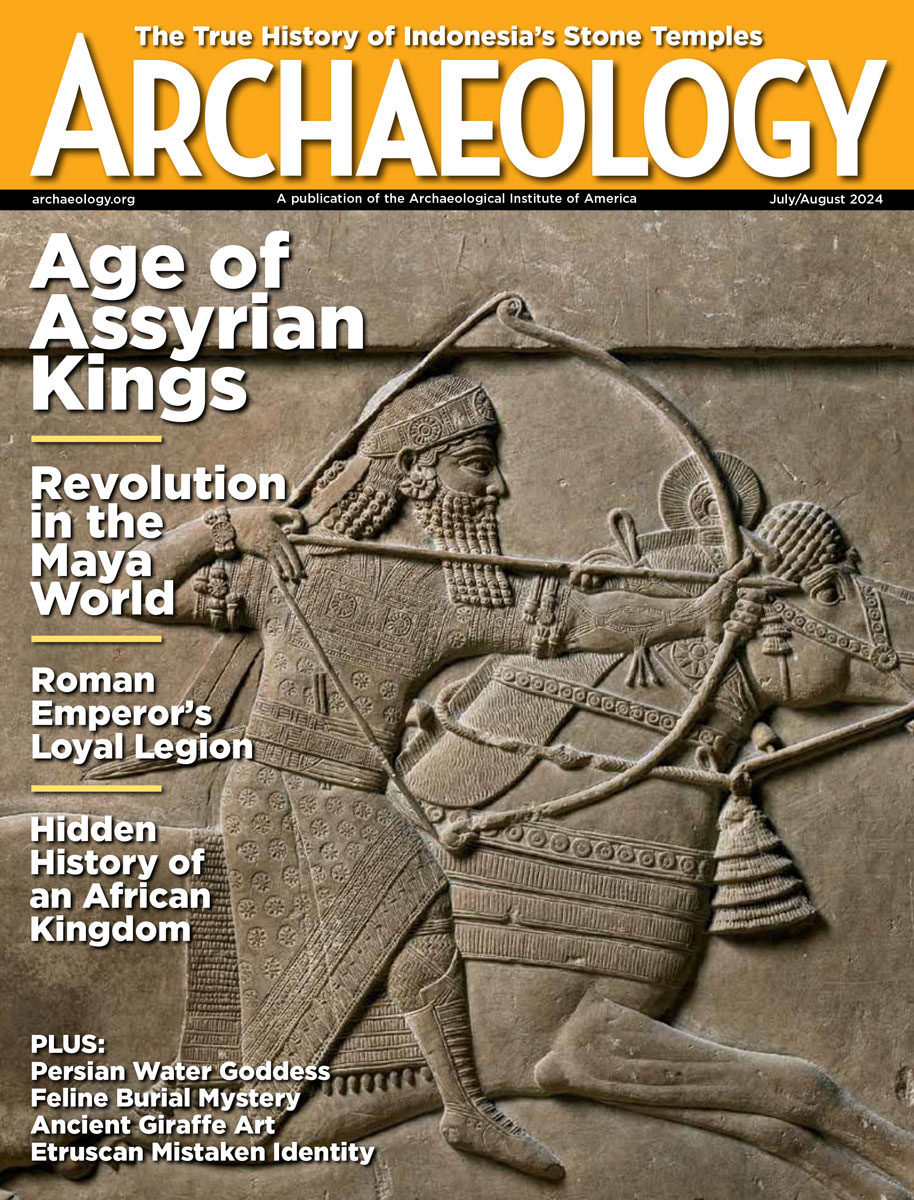Monday, June 9
June 9, 2008
A 2,300-year-old grave was unearthed during construction work in Thessaloniki, Greece. The woman had been buried in a wooden coffin with four gold wreaths, gold earrings set with semiprecious stones, a bronze mirror and vase, and six pots.  This photograph shows the entire grave.
Amphorae once filled with the coveted red wine of Chios have been retrieved from the 2,350-year-old shipwreck off the coast of Cyprus. “Apart from the Chian amphorae, which form the overwhelming majority, there are also other types from the islands of the north Aegean,” according to a report issued by the Cyprus Antiquities Department. Â
Field-school students are mapping prehistoric tepee rings in Bighorn Canyon National Recreation Area. “The nice thing about tepee rings is that most people don’t pick up the rocks and take them away,” said Laura Scheiber of Indiana University. Â
On the Philippine island of Cebu, archaeologists are investigating the 600-year-old town of Boljoon.  Â
Here’s another article on a bronze statue said to have been smuggled out of Yemen. Â
A catacomb has been discovered beneath Saint Georgeous Church in northern Jordan, which was built in 230 A.D. The catacombs show evidence of early Christian rituals.  In a second article on the discovery, Abdul Qader Hassan, head of the Rihab Centre for Archaeological Studies, calls the cave “the first church in the world.” Â
Lawyers for Spain and Odyssey Marine Exploration are due in U.S. federal court in Tampa, Florida, today. Spain accuses the deep-sea salvage company of taking an estimated $500 million treasure from one of its ships. Â
An Australian Rising Sun collar badge has been found in the mass grave being excavated in Fromelles, France. Two thousand Australian soldiers died in the 1916 battle during World War I. Â
“The Hopewell Ceremonial Earthworks and Serpent Mound are unique in the world. They’re representative of the rich cultural heritage of Ohio’s early Native Americans,” said Dean Alexander, superintendent of the Hopewell Culture National Historical Park in Chillicothe, Ohio. They’ve also made the U.S. short list of monuments to be considered for World Heritage status. Â
Representatives from New Zealand will travel to Canada to retrieve Maori skeletal remains held in museums across the country. “I think it is very indicative of the overall relationship between Canada and New Zealand – our similar values and respect for our First Peoples,” New Zealand High Commissioner Kate Lackey told reporters.
- Comments Off on Monday, June 9









